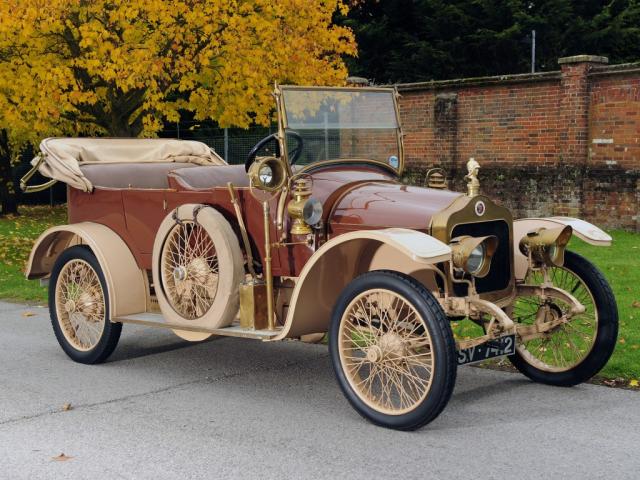1913 Minerva Type DD 14HP Victoria
- Brand: Minerva
1913 Minerva Type DD 14HP Victoria Tourer by Cann & Co
'For many years past the name of Minerva has been internationally recognised in the automobile world as typifying not merely a high measure of excellence in the goods manufactured, but as a criterion of leadership in the evolution of the higher grade of chassis... The interior is commodious, distinguished and 'comfy'... quiet and dignified, a car of genteel luxury unsullied by any Sir George Midas ostentation...' - Minerva catalogue, 1930.
Minerva - the 'Goddess of Automobiles' - was the finest make produced by Belgium's once¬ vibrant motor industry. Founded in Antwerp in 1899 by Dutchman, Sylvain de Jong, Minerva began life as a bicycle maker, swiftly diversifying into the manufacture and supply of proprietary motorcycle engines before building its first powered automobile around the turn of the 19th Century. De Jong set up Minerva Motors SA in 1902 and thereafter his company progressed from being a manufacturer of engaging 'driver's cars' to one that looked more towards the chauffeur-driven carriage trade.
Built along Panhard lines, the early Minervas were powered by a variety of engines of sidevalve configuration and proved hugely successful, particularly in the UK where they were vigorously promoted by the firm's London agent, David Citroën (cousin of carmaker, André) who had joined de Jong on the board of a re-capitalised Minerva company in 1903. The adoption in 1908 of Charles Yale Knight's double sleeve valve engine - a design noted for its silence - enabled Minerva to establish itself in the forefront of luxury carmakers alongside marques of the calibre of Rolls-Royce, Hispano-Suiza, Isotta-Fraschini and Cadillac. Indeed, The Honourable C S Rolls was one of the firm's first overseas dealers. By 1910 all Minervas featured the Knight engine, the larger models, such as the MM, being much favoured by European royalty, the Kings of Belgium, Norway and Sweden among them. Minerva's was soon the biggest car plant in Belgium, employing 1,600 workers.
In their day Minervas enjoyed an outstanding reputation in competitions of all kinds. They fielded a winning team in the 1912 Grand Prix de Belgique regularity trial, took the Swedish Winter Cup in 1911, 1913 and 1914, and even finished 2nd, 3rd and 5th in the 1914 Isle of Man Tourist Trophy.
This handsome Minerva 14hp Victoria is powered by a 2.1-litre four-cylinder Knight-type engine, which drives via a cone clutch, four-speed gearbox and worm drive rear axle. It is believed that this particular car was supplied to respected coachbuilders, Cann & Co of Camden Town, London, whose plate is affixed to the front. Cann's speciality was the supply of coachwork for the White steam car and other imported makes such as Benz, Brasier, Delaunay-Belleville and, of course, Minerva. The firm clearly enjoyed a close relationship with Minerva's London agents, as its stand at the Olympia Motor Exhibition of 1912 and 1913 featured Minerva models.
Its accompanying VCC Car Examination Record states that the car was discovered on a farm 75 miles from Sydney, Australia and shipped to Raymond E Nelson in California in 1962, continuing: 'At that time the car appears to have been compete other than the rear section of the body which had been sawn off and replaced to form a pickup in typical Australian style.' The aforementioned document also states that the body has been attributed to Phizackerley of Sydney.
Whatever the maker, this car carries four/five seater tourer coachwork built to the highest standards and fitted with an elegant Victoria hood. Splendidly equipped with period lighting, wire wheels and opening windscreen, it is redolent of the fine carriages that paraded society ladies around fashionable parks in the Edwardian era.
This car was Restored in the late 1980s.
Descriptions & pictures by bonhams
| Specification | |
| Production Start | 1913 |
| Country of origin | Belgium |




































